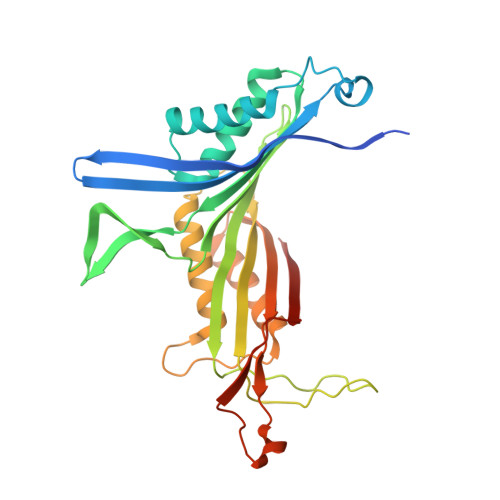Evolutionary history and metabolic insights of ancient mammalian uricases.
Kratzer, J.T., Lanaspa, M.A., Murphy, M.N., Cicerchi, C., Graves, C.L., Tipton, P.A., Ortlund, E.A., Johnson, R.J., Gaucher, E.A.(2014) Proc Natl Acad Sci U S A 111: 3763-3768
- PubMed: 24550457
- DOI: https://doi.org/10.1073/pnas.1320393111
- Primary Citation of Related Structures:
4MB8 - PubMed Abstract:
Uricase is an enzyme involved in purine catabolism and is found in all three domains of life. Curiously, uricase is not functional in some organisms despite its role in converting highly insoluble uric acid into 5-hydroxyisourate. Of particular interest is the observation that apes, including humans, cannot oxidize uric acid, and it appears that multiple, independent evolutionary events led to the silencing or pseudogenization of the uricase gene in ancestral apes. Various arguments have been made to suggest why natural selection would allow the accumulation of uric acid despite the physiological consequences of crystallized monosodium urate acutely causing liver/kidney damage or chronically causing gout. We have applied evolutionary models to understand the history of primate uricases by resurrecting ancestral mammalian intermediates before the pseudogenization events of this gene family. Resurrected proteins reveal that ancestral uricases have steadily decreased in activity since the last common ancestor of mammals gave rise to descendent primate lineages. We were also able to determine the 3D distribution of amino acid replacements as they accumulated during evolutionary history by crystallizing a mammalian uricase protein. Further, ancient and modern uricases were stably transfected into HepG2 liver cells to test one hypothesis that uricase pseudogenization allowed ancient frugivorous apes to rapidly convert fructose into fat. Finally, pharmacokinetics of an ancient uricase injected in rodents suggest that our integrated approach provides the foundation for an evolutionarily-engineered enzyme capable of treating gout and preventing tumor lysis syndrome in human patients.
- School of Chemistry and Biochemistry, Georgia Institute of Technology, Atlanta, GA 30332.
Organizational Affiliation:

















